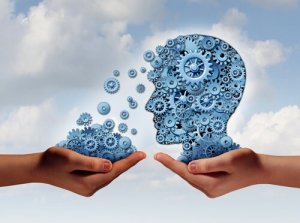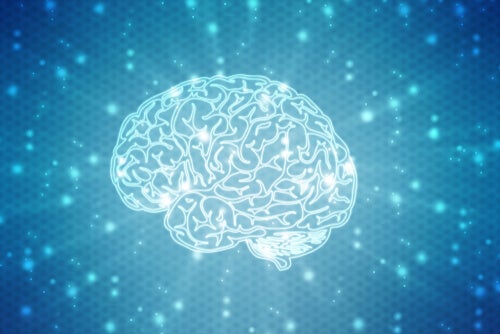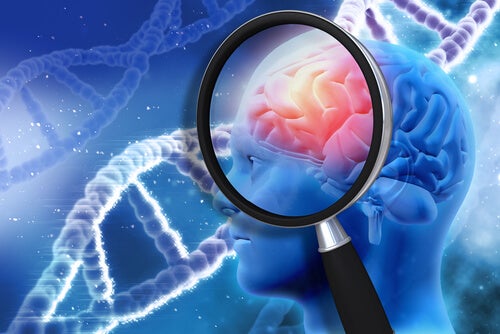Neuropsychological Rehabilitation

Currently, neuropsychological rehabilitation is in the health services limelight due to its usefulness in traumatic events that pertain to the brain. We need to stress that a rehabilitation process is of utmost importance for a person to be able to be autonomous. Therefore, they’ll be better able to reintegrate into their community.
You must take various things into account when it comes to choosing a neuropsychological rehabilitation plan. This is because each one of them can affect both the development of the therapy and its results. But what are these variables?

Injury variables related to neuropsychological rehabilitation
Firstly, there are injury variables. They highlight aspects directly related to a patient’s injuries. Above all, in the direct damage of the brain structure and its function.
Location
One of the things to consider is the location or the reason for brain damage. Craniocerebral trauma, stroke, brain tumors, or infectious diseases that affect the brain are among the main causes.
A stroke can have two main variants:
- Ischemic, which consists of the obstruction of one or more arteries of the brain. The main damage occurs in the white matter.
- Hemorrhagic, which results in a ruptured artery. It results in hemorrhage and, therefore, affects the grey matter more.
There are also two types of craniocerebral trauma:
- The first is an open head injury in which the lesions can become more focal and affect specific parts of the brain.
- Secondly, closed-head injuries, in which the lesions are usually more diffuse.
Identifying the origin and location of a lesion is important to know both the affected and preserved parts. This is because that’s the foundation to develop the most appropriate strategies and the activities required for neuropsychological rehabilitation.
Intensity
The severity of the lesions balances the importance of the consequences in many cases. One of the measures to determine their level of intensity is the duration of post-damage amnesia. In other words, the amount of time it takes a given patient to remember they suffered brain damage and that they’re in recovery.
Another way to measure the intensity of an injury is through the Glasgow coma scale at the time of hospitalization. This questionnaire measures the level of consciousness through the ocular, verbal and motor responses of an injured patient.
The ideal score is 15 points, which is that of a person with no damage. Similarly, people with scores of three, four, and five often have problems being independent in the future.
Time of evolution
The period of evolution is the time it takes for a patient to begin to show improvement. In this case, you must take into account the space between the injury and the beginning of treatment.
Thus, the rapid onset of neuropsychological rehabilitation is relevant. When there’s an improvement in a short amount of time, it means there’s only slight brain damage. On the contrary, when a person takes longer to recover, their damage more serious.
Personal variables
These variables are important to know the way a patient was prior to their injury. This is because it’s helpful in the planning of long-term neuropsychological rehabilitation objectives. Doctors must take into account the functional status of a patient prior to an injury, along with their individual characteristics.
Age is the first personal variable to take into account. The younger a person is, the sooner they’ll recover. In other words, neuropsychological rehabilitation is faster in younger patients.
Another variable to keep in mind is the cognitive reserve since it works as a neuroprotector. Researchers found that people with higher education have a greater number of neural connections. So consequently, they enjoy a more complete functional compensation. Thus, the symptoms are less limiting and neuropsychological rehabilitation is more effective in these patients.

Contextual variables in neuropsychological rehabilitation
Contextual variables pertain to a patient’s post brain damage environment. Likewise, they take into account the support people have during the neuropsychological rehabilitation process.
Family is the first factor. Likewise, they can provide information about the patient’s development in different contexts. In addition, they can help with the continuity of what a patient does during therapy and what they must do at home.
A patient’s relatives help when they foster independence and boost motivation. This facilitates the rehabilitation process when it translates into their daily activities. Also, a patient’s family intervention can be very important, as it can help transfer what’s achieved in therapy to their daily life.
The rehabilitation team is also a variable. Here, you must take into account both the environment they work in and their professional behavior. A positive attitude in both the team and the patient will always improve a prognosis. In other words, the therapy will be more effective.
Conclusion on neuropsychological rehabilitation
Finally, it’s important to note that the rehabilitation process must be conducted by a professional team. Similarly, the various factors that influence the result also come into play during this period of time.
For the process to develop properly, the patients, the family, and the rehabilitation team must be comfortable and satisfied with the intervention proposal. It helps to have an adequate environment, activities suitable to a patient’s needs, and proper adaptation to their daily life.
All cited sources were thoroughly reviewed by our team to ensure their quality, reliability, currency, and validity. The bibliography of this article was considered reliable and of academic or scientific accuracy.
- García-Molina, A., López-Blasquéz, R., García-Rudolph, A., Sánchez-Carrión, R., Enseñat- Catallops, A., Tormes, J. & Roig-Rovira, T. (2015). Rehabilitación cognitiva en daño cerebral adquirido: variables que median en la respuesta al tratamiento, Rehabilitación (Madrid), 49(3), 144-149. http://dx.doi.org/10.1016/j.rh.2015.02.002
- Horwitz, J. & Horwitz N. (2013). Neurological Recovery and Plasticity. En Noogle, C. & Dean, R. (Ed.) Neuropsychological Rehabilitation (13-21). Nueva York, Estados Unidos: Springer Publishing Company,
- Prigatano, G. (1999). Principles of Neuropsichological Rehabilitation. New York: Oxford University Press, Inc.
This text is provided for informational purposes only and does not replace consultation with a professional. If in doubt, consult your specialist.








